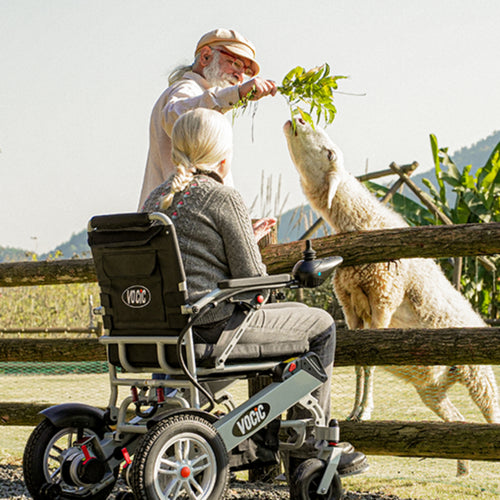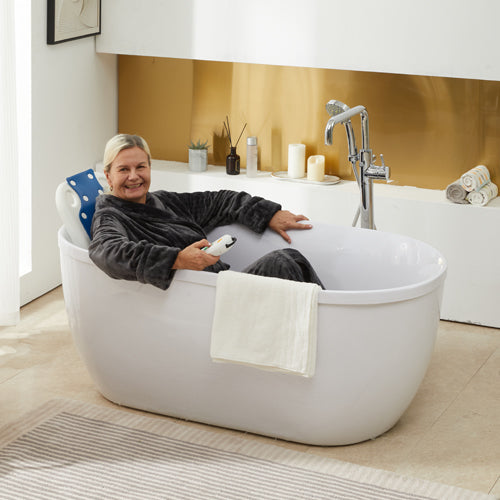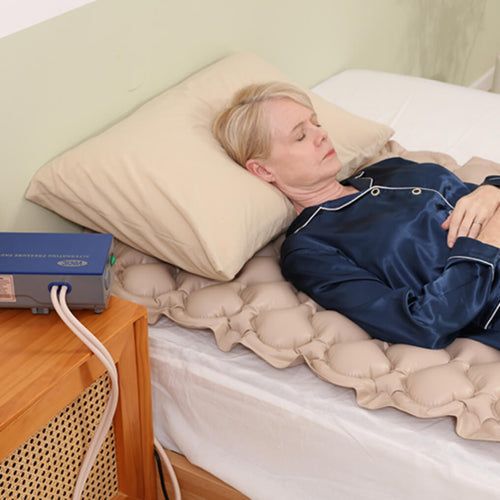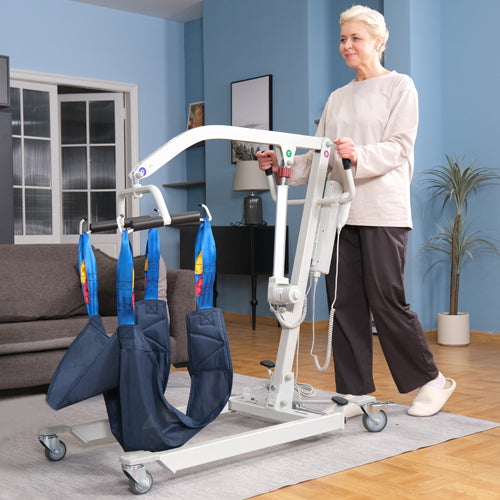Losing your mobility is bad for your muscles. Age, injury, or a medical procedure may limit mobility and cause muscle loss. Fortunately, mobility aids like walkers can provide additional support and help you move around easily.
But there are many kinds of rollator walker in the market. How do you choose? Don't be worried. This article introduces various walkers according to the different ages.
What Are Walkers?

A walker is a mobility aid used to assist people who have difficulty walking independently. It's designed to provide stability and support for individuals who might be dealing with various conditions affecting their mobility.
They are adjustable frames made from lightweight metal like aluminum. These frames are adjustable to suit the height of the user. They are also foldable and easy to store.
Walkers are a crucial aid for many elderly individuals, people with disabilities, or those recovering from injuries, helping them maintain mobility and independence while ensuring safety.
Different Types of Walkers

According to the different ages and stages of people, the walkers have various types. It is divided into 2 types, walkers for adults, and walkers for babies. I will introduce them with the following content.
Types of Walkers for Adults
For adults or the elderly, there are several types of walkers designed to cater to various mobility needs and preferences. Here's an overview of the different types:
Standard Walkers
- Basic frame design with four legs.
- Provides a high level of stability.
- The user lifts the walker to move it forward.
- Ideal for those who need significant support and can manage lifting the walker for each step.
Two-Wheel Walkers
- Similar to standard walkers but with wheels on the front two legs.
- Easier to move forward without lifting, as the user can push it.
- Good for those who need stability but can handle some weight-bearing.
Rollators (Four-Wheel Walkers)
- Equipped with four wheels, brakes, and often a seat and storage basket.
- Requires less effort to move and is more suitable for longer distances.
- The seat allows for resting, making it ideal for those with limited stamina.
- Best for those who need balance support but have good strength in their arms.
Three-Wheel Rollators
- Feature a three-wheel design, typically more compact and maneuverable.
- Often lighter and easier to navigate in tight spaces than four-wheel rollators.
- Usually, they do not have seats.
Heavy-Duty Walkers
- Designed for larger or heavier users.
- Have a wider frame and stronger build to accommodate higher weight capacities.
- Can come in standard, two-wheel, or rollator styles.
Knee Walkers
- Designed for people with foot or ankle injuries.
- The user places the injured leg on a padded platform and uses their good leg to glide.
Hemi Walkers
- Designed for individuals who can use only one hand or arm.
- Heavier and more stable than a standard walker, but offers support to one side of the body.
Foldable Walkers
- It can be folded for easy storage and transportation.
- Available in various styles, including standard, two-wheel, and rollators.
Posture Control Walkers
- Designed to encourage a more upright posture and natural gait.
- Often used in rehabilitation settings.
Each type of adult walker offers different levels of support, stability, and mobility. The choice depends on the user's specific physical needs, lifestyle, and the environment in which the walker will be used. It's important to consult with a healthcare provider or a physical therapist to choose the most appropriate walker type for individual needs.
Types of Walkers for Babies

For babies, walkers are designed to assist them in learning to walk and to encourage mobility. Here are the main types of walkers suitable for babies:
Seated Walkers
- Feature a seat set in a frame on wheels.
- Allow babies to sit and use their legs to move around.
- Often equipped with a tray and various toys to keep the baby entertained.
- Suitable for babies who can hold their heads up independently but are not yet walking.
Push Walkers
- Designed without a seat; babies stand and hold onto the walker for support.
- Encourage babies to take steps while holding onto the walker for balance.
- Typically have a handlebar and a base on wheels, and often come with interactive toys on the panel.
Activity Walkers
- Combine the features of a walker with an activity center.
- Provide various toys, lights, and sounds to stimulate the baby’s senses and motor skills.
- Can be found in both seated and push walker designs.
Convertible Walkers
- Designed to transform as the baby grows.
- Can often be converted from a seated walker to a push walker.
- Provide a versatile option for long-term use as the baby progresses from sitting to walking.
Learning Walkers
- Focus on providing educational toys and activities.
- May include elements like shape sorters, sound effects, and musical keys.
- Available in both seated and push walker styles.
Walk-Behind Walkers
- Similar to push walkers but designed for slightly older babies who are ready to walk independently.
- Allow babies to push the walker in front of them, offering support as they walk.
When choosing a walker for a baby, it's important to consider safety and the child's stage of development. Look for walkers with stability features, adjustable heights, and engaging activities that are appropriate for the baby’s age. Additionally, it's crucial to always supervise babies while they are using a walker, as there is a risk of falls and accidents.For more information on selecting the right walker, you can read our article on Do Walkers Come in Different Sizes?
How to Choose a Walker According to Different Age

Choosing a walker according to different age groups involves considering the specific needs, abilities, and lifestyles of each age category. Here's a guideline for selecting a walker for various age groups:
For Infants and Toddlers
- Safety First: Look for walkers with safety features like brakes, a wide base to prevent tipping and limited speed.
- Adjustability: Choose a walker that can be adjusted in height as the child grows.
- Entertainment: Models with attached toys or activities can keep the child engaged.
- Supervision: Always ensure adult supervision when the child is using the walker.
For Children
- Pediatric Walkers: These are specifically designed for children and are typically lighter and more colorful.
- Adjustable and Durable: The walker should grow with the child and withstand rough use.
- Support Type: Depending on the child's needs, choose between walkers with or without wheels, and consider features like forearm supports.
For Young Adults
- Active Lifestyle: For young adults recovering from injuries, consider lightweight, easy-to-transport walkers.
- Foldability: A foldable walker can be beneficial for young adults who might need to store it in a car or small space.
- Aesthetics: Young adults might prefer a walker with a modern, less medical appearance.
For Middle-Aged Adults
- Ergonomic Design: Look for walkers that reduce strain on joints and back.
- Customization: Consider walkers that can be outfitted with accessories like baskets or seats.
- Adaptability: If the walker is for temporary use (like after surgery), choose a model that can be easily stored away when not needed.
For Seniors
- Maximum Support: Older adults often require walkers with more stability; a four-wheel walker or rollator with a seat and brakes can be ideal.
- Comfort: Padded handles and seats can increase comfort for longer use.
- Height Adjustability: It's crucial for the walker to be at the correct height to prevent stooping or strain.
- Ease of Use: Seniors may benefit from walkers that are easy to maneuver and require less physical effort to use.
For All Ages
- Consult a Professional: Regardless of age, it's always a good idea to consult with a healthcare provider or a physical therapist for personalized advice based on health and mobility needs.
- Trial and Error: If possible, try out several models to find the most comfortable and suitable one for the individual's needs and abilities.
In all cases, the chosen rollator walker should enhance the user's mobility while being safe, comfortable, and appropriate for their physical abilities and daily activities.
How to Use a Walker Correctly
Using a walker correctly is crucial for safety and effectiveness. Here’s a step-by-step guide on how to use a standard walker properly:
Setting Up the Walker
- Adjust the Height: The walker should be at the correct height. When you stand inside the walker and let your arms hang down, the top of the walker should align with the crease on the inside of your wrist. Your elbows should be slightly bent when you hold the handles.
- Check Stability: Before using, ensure all walker's legs are stable and the rubber tips are not worn out.
Walking with the Walker
- Starting Position: Stand in the middle of the walker with your weight evenly distributed. Hold the grips of the walker.
- Moving the Walker: Lift the walker and place it a short distance ahead of you, keeping it level and steady. Make sure all four legs of the walker are on the ground before you take a step.
- Taking a Step: Move your weaker leg forward into the middle area of the walker first, then step with the stronger leg. If your legs are equally strong, step with either leg.
- Repeat the Process: Continue moving the walker forward and stepping into it, maintaining a steady pace. Avoid pushing the walker too far in front of you, as this can cause imbalance.
Turning with the Walker
- To Turn: Take small steps while turning. Do not try to pivot on one foot as this can cause a loss of balance.
Sitting and Rising
- To Sit Down: Back up to a chair until you feel it against the back of your legs. Reach back for the chair with one hand and then the other, and slowly lower yourself onto the chair.
- To Stand Up: Slide to the front of the chair. Push yourself up using the strength of your arms and legs, then grasp the walker's grips.
Safety Tips
- Wear Proper Footwear: Use non-slip, sturdy shoes.
- Avoid Hazards: Clear walkways of tripping hazards like rugs or cords.
- Ensure Good Posture: Keep your back straight, and look forward, not down at your feet.
- Use Slow, Controlled Movements: Avoid quick or jerky movements.
- Take Breaks: If you feel tired or dizzy, stop and rest.
Remember, if you're recovering from surgery or have specific health conditions, it's important to get personalized instructions on walker use from a healthcare professional. They can provide guidance tailored to your individual needs and ensure you're using the walker safely and effectively.
Buying the Best Walker from Our Store
We offer a full assortment of daily living and home care products including walker for seniors, rollators, wheelchairs, bathroom safety items, daily living aids, and a variety of other essentials.
Buy the best mobility aids at VOCIC and solve your worries at affordable prices.









